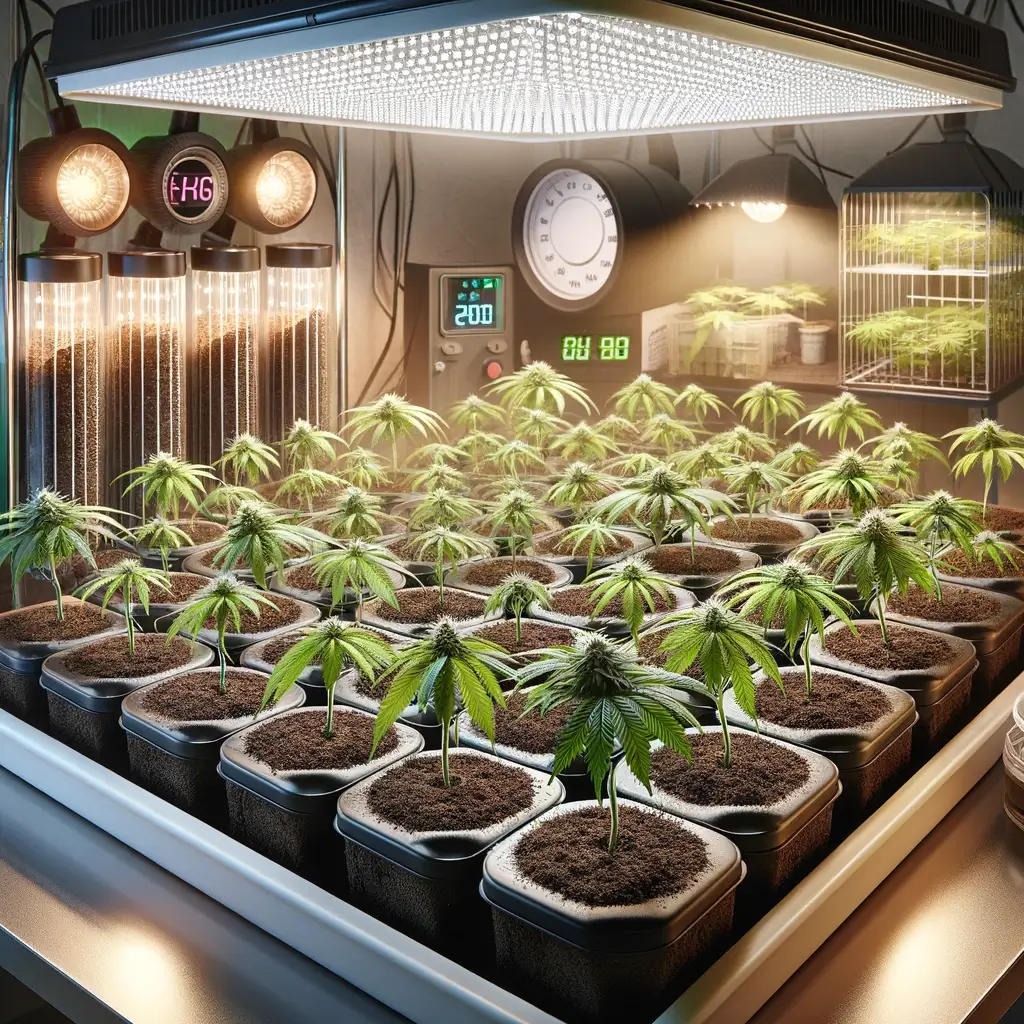Cannabis cloning represents a fascinating intersection of horticulture and science, offering a glimpse into the potential of genetic replication. Cloning is not just about creating a new plant; it’s about preserving the genetic identity of a prized parent plant, ensuring consistency in quality, potency, and yield. However, the success of cloning is heavily dependent on the environment, with even the slightest deviation capable of derailing the process.
Starting with Quality Genetics
While environmental control is critical, the foundation of a successful clone begins with the mother plant. The genetic quality of the parent plant determines the potential of the clones, making the choice of source material paramount. For those looking to ensure the best start for their cloning journey, sourcing seeds from reputable providers such as 1 (833) SEED-USA can offer a selection of high-quality genetics. Beginning with a strong genetic base not only enhances the cloning process but also sets the stage for a robust growth cycle and bountiful harvest.
The Crucial Role of Environment in Cloning
In the cloning phase, young cannabis cuttings are at their most vulnerable, having been separated from the nutrient supply of the mother plant. The key to successful rooting and growth lies in creating an environment that closely mimics the conditions of early plant life, focusing on humidity, temperature, and light.
The environment for clones is a finely balanced ecosystem, where the air’s moisture, the soil’s warmth, and the light’s gentle touch converge to support the birth of new roots. Regular monitoring and adjustments ensure that these parameters remain within their optimal ranges, guiding the clones towards successful rooting.
- Optimal Humidity: High humidity levels, around 70-85%, are crucial in the early stages of cloning. This encourages the cuttings to develop roots as they search for moisture. A humidity dome over the cloning tray is an effective way to maintain these levels, preventing the delicate cuttings from drying out.
- Temperature Control: The ideal temperature range for clones is between 72-77°F (22-25°C). This warmth supports enzymatic activities and cellular processes essential for root development. Precise temperature control, often achieved through environmental control devices, ensures the cuttings are not subjected to stress that can inhibit rooting.
- Gentle Lighting: Clones require light for photosynthesis, yet their exposure should be gentle and diffused to avoid overwhelming the young plants. Soft, LED lights or fluorescent bulbs are preferred during this stage, providing the necessary light spectrum without the intensity that can damage sensitive cuttings.
The Advantage of Cloning
Cloning offers numerous advantages, including the preservation of specific plant characteristics and a faster initiation of the growth cycle compared to seeds. For those looking to maintain a continuous growth cycle or replicate a particularly successful harvest, cloning can be an invaluable tool in the cannabis cultivator’s arsenal.
The journey of cannabis cloning is both a science and an art, demanding attention to detail and a deep understanding of plant needs. The featured image captures the essence of this delicate phase, where each clone, nestled in its nurturing environment, embarks on a journey of growth and discovery. By mastering the environmental conditions and starting with premium genetics from sources like 1 (833) SEED-USA, cultivators can ensure a strong foundation for their cannabis plants, paving the way for a fruitful and rewarding cultivation experience.



